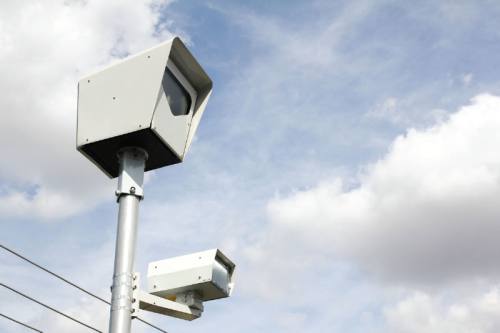Red-light cameras are being shut down across Texas following Gov. Greg Abbott’s signing of House Bill 1631 on June 1—and cities across the state, such as Tomball and Magnolia, are also seeing hundreds of thousands of dollars in budget losses by the passage of HB 1631, city officials said. HB 1631 prohibits the use of photographic traffic signal enforcement systems, the bill reads.
Previously, traffic violations by red-light cameras warranted a civic penalty of up to $75, according to the Texas Transportation Code. The Texas Department of Motor Vehicles and the county assessor-collector were allowed to refuse registrations or registration renewals for vehicle owners who were delinquent in their payments.
An amendment to this new law prevents state and county officials from refusing these vehicle registrations. HB 1631 also allows cities to continue operating their cameras until contracts with camera providers expire, but some city officials have decided to pull them immediately.
Cities using red-light cameras contributed half of the revenue from red-light camera violations to the state’s designated trauma facility and emergency medical services account, and the remaining portion could be used by the city for traffic, pedestrian and public safety; intersection improvements; and traffic enforcement, according to the Texas Transportation Code.
An analysis of HB 1631 by the House Research Organization shows a decrease of $28.3 million from the state’s designated trauma facility and EMS account in fiscal year 2020-21. The HRO is an independent department of the Texas House of Representatives that analyzes the effects of legislation.
Tomball effects
The city of Tomball installed three red-light cameras in 2008: two at the eastbound and westbound lanes of FM 2920 and Business 249—which were turned off June 2—and a third at the northbound lane of Zion Road and Hwy. 249, which was turned off when construction of the Hwy. 249 tollroad extension to Montgomery County began in 2017, City Manager Rob Hauck said.
“That revenue source is gone. That’s a reality we’re faced with,” Hauck said. “The good news is we didn’t put any of that money into our operating budget, so our normal operational services will not be affected by the end of the red-light cameras.”
About 12,000 citations were issued per year while the cameras were in use, Hauck said, but most of them came from drivers outside of Tomball ZIP codes.
“Regardless of where anybody is on this issue, it would seem to me that if people simply stopped at red lights, this would be a nonissue. I’m hopeful that we don’t see a negative behavior change or that this makes things less safe for us and for communities around Texas,” he said.
These citations generated about $250,000 in revenue annually for the city of Tomball, which went toward traffic education, traffic enforcement and traffic engineering, Hauck said. This included funds to implement flashing pedestrian crosswalks, school zone flashers, sidewalks, DWI police enforcement details during holidays and additional police equipment, he said.
“I’m sad that we won’t have these funds to do some of what I think is really good work that we’ve been able to do in Tomball, utilizing these monies the way they were intended to be used,” Hauck said.
Magnolia effects
The city of Magnolia’s lone red-light camera, located at the intersection of FM 1774 and FM 1488, was installed in 2010 and turned off June 1, City Administrator Paul Mendes said.
The city issued 11,435 red light camera citations in 2018, with 3,888 citations issued in 2019 before the cutoff date June 1, according to Magnolia Police Department information.
“That camera cut down tremendously on accidents at the intersection on [FM] 1774 and [FM] 1488,” Mendes said. “It’s one of our busiest intersections, so hopefully people will still be more cautious even though the camera is gone.”
The city’s red-light camera fund was projected to total $385,719 in net revenue for fiscal year 2017-18, according to the city’s FY 2018-19 budget. This fund single-handedly covered the cost of three traffic safety officers, their police vehicles, and fuel and maintenance for the vehicles, Mendes said, as well as the operational costs of the camera itself.
The future of the safety officer positions is still unclear at this time, Mendes said.
“A small city is very much like having a family,” he said. “When one department is impacted, the rest of us feel that impact too. We will determine what needs to be done going forward, but we need those officers.”






